Features of carpet embroidery needles
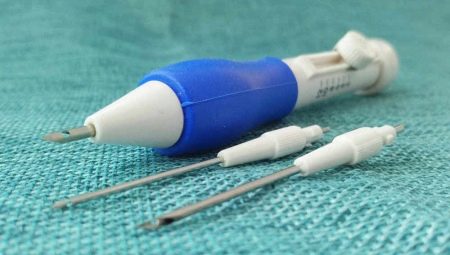
Carpet embroidery by the technique of work is a bit like the creation of colorful paintings from multi-colored threads with a cross or satin stitch. But for this type of needlework, a special needle is required so that the image on the fabric basis turns out to be voluminous and fluffy, resembling the surface of a carpet.
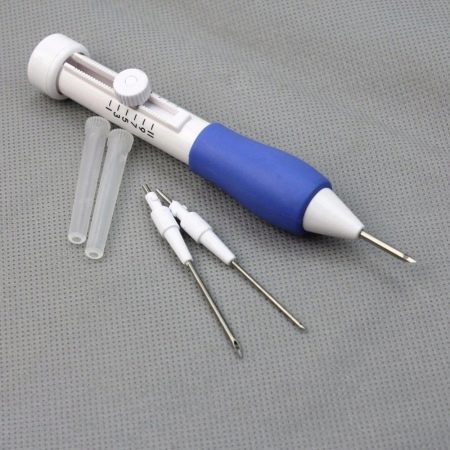
general description
The nonwoven tapestry technique involves transferring the design onto a piece of fabric using a dedicated carpet stitching needle to create the loops. Any plain and dense fabric is suitable for work, and a sample of the drawing can be printed from the Internet or if you have the ability to draw on a piece of paper.
Using multi-colored threads and needles, you can create cozy and cute accessories for interior decoration. Among them can be small tapestries on the wall, foot mats, stool covers, pillows.
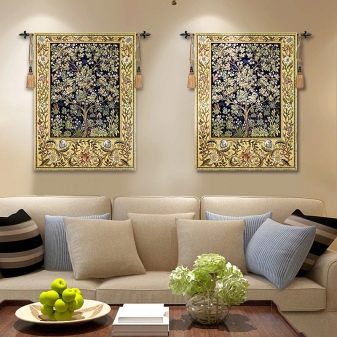
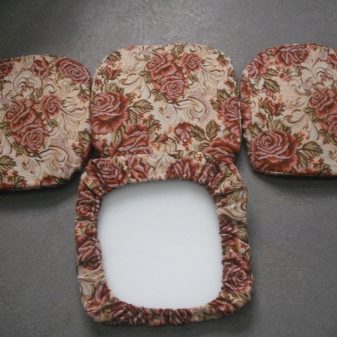
Appliques can be made on clothes using the carpet embroidery method, while volumetric images will decorate children's things. They look original on scarves, sweaters, bags and other wardrobe details.
The tool for embroidery with this technique is a special needle with a beveled point. Novice needlewomen often confuse it with a crochet hook because of the similar handle. These needles, unlike other types of embroidery, can be found in specialized home craft stores. They consist of a point with an eye for threading in threads, which are passed through a metal handle with a diameter of 3 mm, hollow inside.
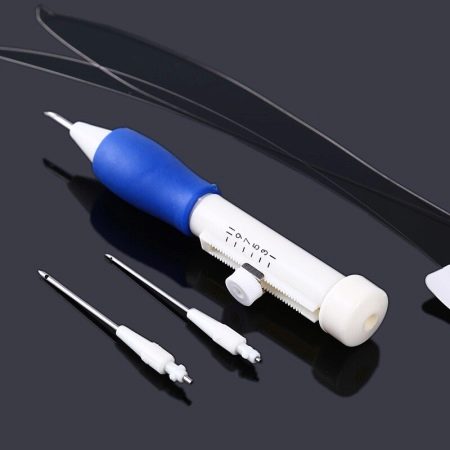
The advantages of carpet embroidery techniques are an easy and affordable way to create beautiful decorative items for all ages. Even children can quickly master such an easy method of needlework. The softness and plasticity of the result obtained allows you to use it for any accessories and clothing. If you wish, you can reproduce any drawing or picture by transferring them to a dense fabric base. The image is voluminous and fluffy, although it can take a long time to create. But any piece of decorative art is made for long-term use, and in the manufacturing process, patience and many skills are developed for the work of needlewomen.
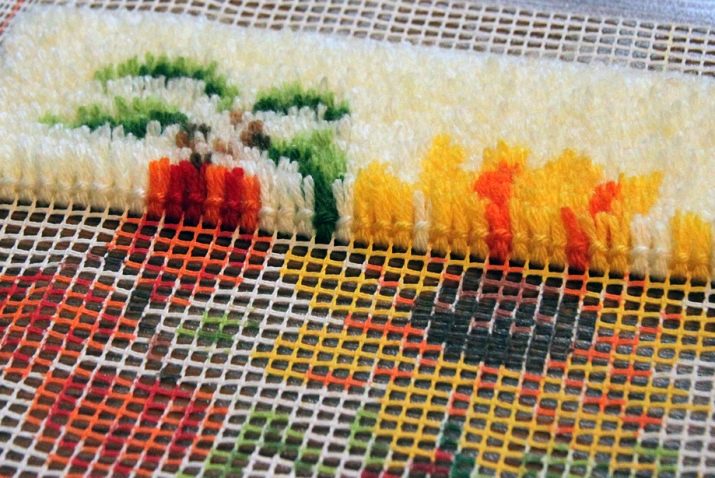
There are two techniques that you can use with a carpet needle. Looped, which requires a net or a piece of dense fabric, synthetic or natural threads of different colors and thicknesses. On the seamy side of the fabric, the drawing is transferred along the contours, using a marker or soft pencil. It is useful to stretch the canvas over a frame or hoop. The work begins from the wrong side, and the picture is obtained, respectively, from the front side.
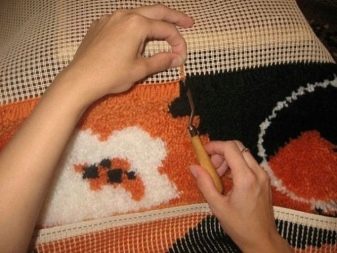
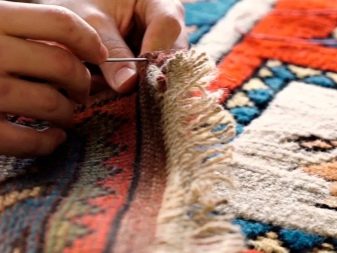
Uzelkova, which seems more difficult to many needlewomen due to the fact that it is necessary to insert 5 cm long threads into the needle more often, or to use a crochet hook to lay the stitches in parallel or in a cross.
Burlap or coarse cotton textures work best for carpet embroidery techniques, which can be used without canvas or mesh. Sometimes velvet, denim, linen, knitwear and other dense fabrics are used for work. The main criterion when choosing a base should be a good throughput of the material for the passage of the needle.
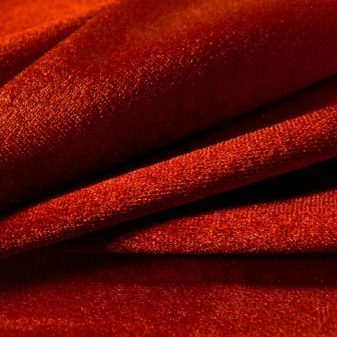
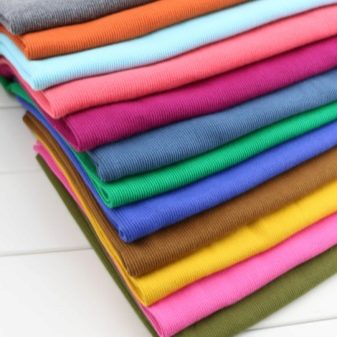
How to use it correctly?
The thinner the threads selected for work, the more elegant the result will look, and besides the floss for carpet embroidery, thick types of yarn made of wool, semi-wool, acrylic and other materials are used. Bulky woolen threads give the work the appearance of a carpet product due to the bulge and hairiness of the texture.
The peculiarity of a carpet embroidery needle is that it is hollow inside, because the working thread runs along the entire length of the tool. In order to get ready for work, you need to insert the thread into the lower part of the handle and pull it out from the side of the needle point, where to thread the tip into the eyelet.
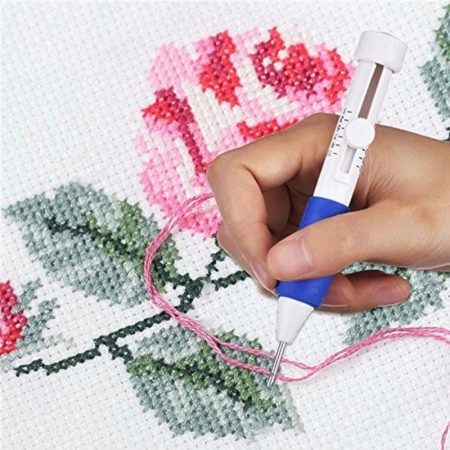
Factory-made needles have a regulator that makes the sharp section different in length, but such a device is not found on home-made tools.
The hole just behind the point of the needle is used to thread the end of the thread and helps to create loops in the fabric. Sometimes, among the ready-made needles available on the market, there are substandard products with burrs inside. Such notches tear the threads or spoil them, so it is better to buy a tool from trusted sellers and not try to save money by choosing the cheapest one. To find a real and high-quality needle for carpet embroidery, one must prepare for the fact that an original instrument without defects is more expensive than simplified analogs that create problems in the process.
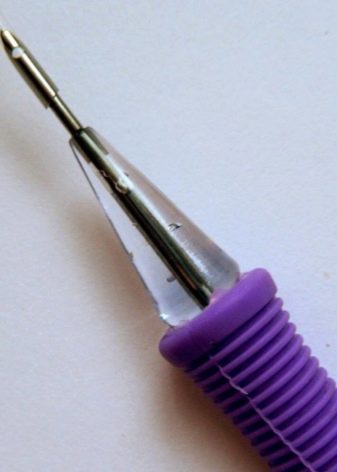
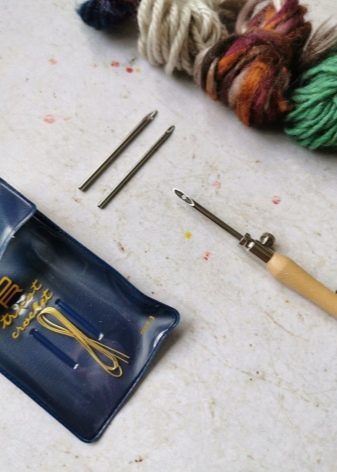
In specialized stores, ready-made kits for this rare type of needlework are sold, which have all the necessary materials, tools, fixtures and instructions for their use. For beginners, the stitching technique using thick yarn and a carpet needle is more suitable. This method will be more visual and understandable for beginners, since it is more reminiscent of the more common and familiar to everyone from school lessons.
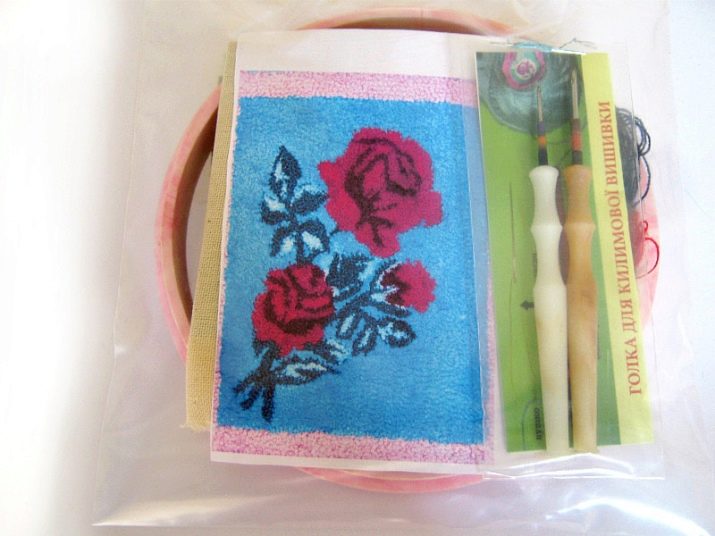
To begin with, you should use a dense canvas or cotton fabric, so it will be easier to learn not to tighten the threads and fasten them from the wrong side. A special type of needle has a stopper that creates loops of one predetermined length. Experienced embroiderers know how to handle several needles at once, on which limiters of different lengths are installed, and on the front side of the canvas, images are obtained that differ in thickness and volume.
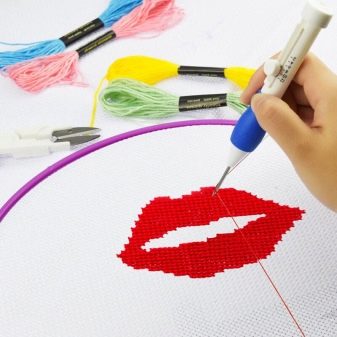
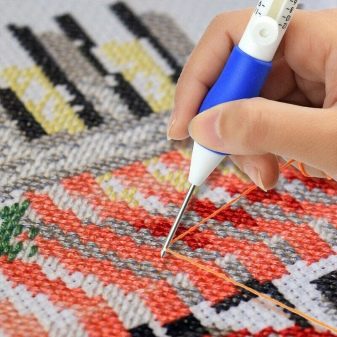
For the convenience of work, beginners often use frames to stretch the fabric base on them. From the inside, the hinges are fixed with PVA glue. The needle should have a comfortable grip and a sufficiently sharp tip that easily fits into dense material. It is to be expected that this tool will have to spend many hours to complete the work, and it should correspond to the anatomical shape of the hand and lie comfortably in the fingers. The thickness of the needle depends on the type of yarn used to create decorative embroidery. It is better to immediately purchase needles of different thicknesses in order to try different ways of working and make more varied paintings.
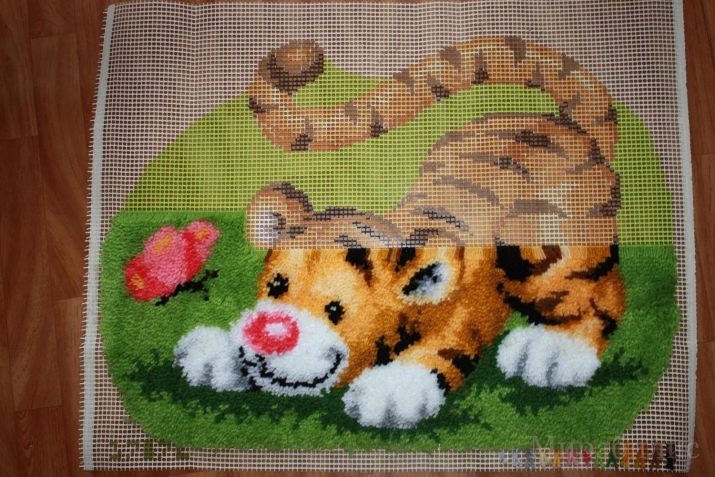
Sometimes there is a variant of a universal thick handle with replaceable needles of different diameters.
How to do it yourself?
You can embroider rugs and appliques at home using a hand-made tool. Since not in every locality you can buy or order a ready-made set of needles for carpet embroidery, you can make it from simple materials at hand, which can often be found in every home. This was done by needles before, when this technique was not widespread, and only individual craftsmen used it.
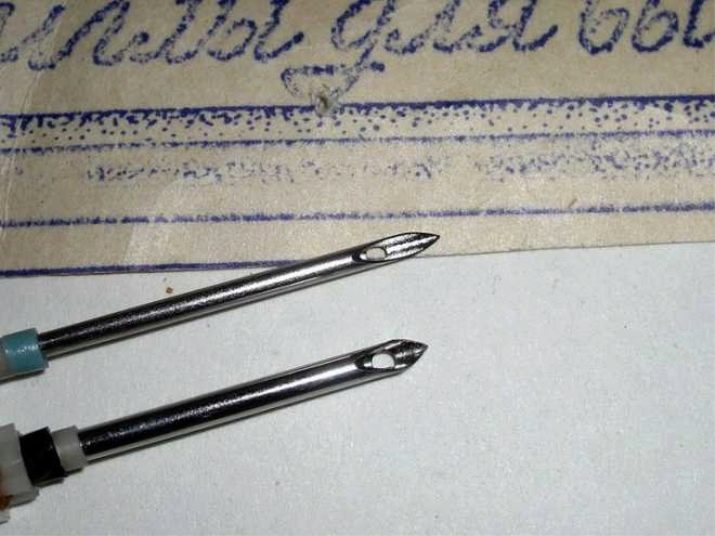
The main disadvantage of homemade embroidery needles is the limitation of the variety of tip diameters. Because of this feature, needlewomen are limited to a small choice of yarn in thickness. To make a homemade needle, you need to take a syringe from a dropper system that is wide enough and has an opening on the side for intravenous infusions. The tip of the needle in these medical instruments is usually cut at just the right angle for embroidery on thick fabric.
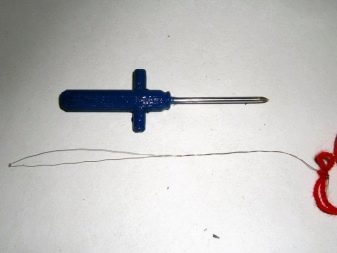
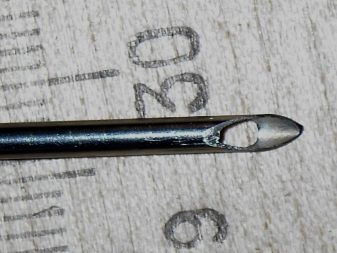
To make a needle, you will need a 5 ml syringe and a rubber gasket for plumbing equipment. Part of the syringe needle must be bite off, leaving a distance of 3 mm from the hole. Both ends of the needle must be sanded so that no burrs remain, and then insert it into a rubber gasket glued with silicone to the outlet of the syringe from the inside.
The needle must be firmly clamped and glued so that it does not move relative to the body during the embroidery process.









